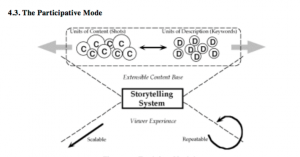Annotated Bibliography 2
Judith Aston, Sandra Guadenzi, Interactive Documentary:Setting the Field, Studies in Documentary Film, Volume 6 Number 2, 2012, pp125-139
This article discusses what an interactive documentary is and how the emergence of digital technology has allowed different types of interactive documentary to be created. It also explains the different modes that these documentaries are made and why they play an important part for the consumers of the new media. There is also reference to how the narrative of interactive documentaries is formed and how this form of storytelling continues to evolve with developing technology. The narrative is usually controlled through the use of action and choice, which in turn creates a non-linear structure. It also articulates the importance of capturing the audience and letting them have control the interactive process.
There is also information on issues and debates raised by the first symposium on Interactive Documentaries. The key themes that were discussed included ethics and the nature of participation, transmedia storytelling and multi platform production. Media practitioners from large media organisations gathered to share their ideas and experiences on creating interactive content. The overall general consensus suggested that interactive documentaries are flourishing and they are here to stay. But the formula is not rigid and will continue to redevelop and change. Overall I thought this article was informative in describing the genre of interactive documentary. But it doesn’t really delve into the issue of monetising this digital content. Would consumers be willing to pay for this sort of content? Or would they only view these type of documentaries through the websites of large media organisations?

